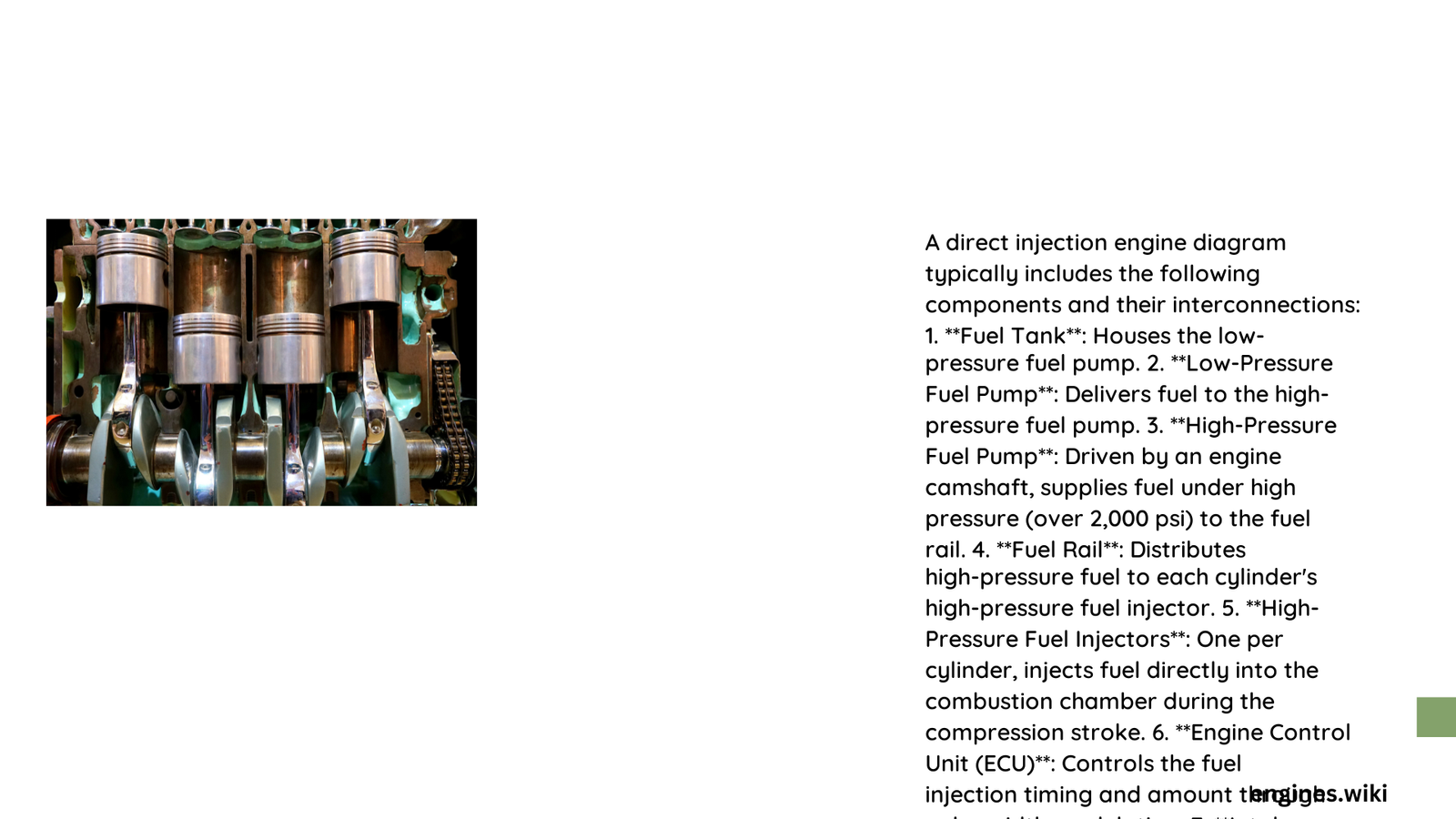Modern direct injection engine technology represents a sophisticated leap in automotive fuel delivery, transforming how gasoline enters combustion chambers with unprecedented precision and efficiency. By utilizing high-pressure fuel injectors strategically positioned within cylinder heads, these advanced systems enable remarkable improvements in power output, fuel economy, and emissions control through precise fuel atomization and targeted delivery strategies.
What Makes Direct Injection Engine Diagram Unique?
How Do Fuel Delivery Components Interact?
Direct injection engine systems comprise several critical components working in synchronized harmony:
| Component | Pressure Range | Primary Function |
|---|---|---|
| Low-Pressure Fuel Pump | 50-60 PSI | Initial fuel supply from tank |
| High-Pressure Fuel Pump | 2,000-3,000 PSI | Pressurize fuel for injection |
| Fuel Rail | High Pressure | Distribute fuel to injectors |
| Fuel Injectors | Extreme Pressure | Direct fuel into combustion chamber |
Fuel Injector Placement Strategies
Two primary injection methodologies define modern direct injection systems:
- Wall-Guided System
- Injector positioned at strategic angle
- Fuel deflected by piston dome design
-
Requires precise piston geometry
-
Spray-Guided System
- Centralized injector placement
- Direct fuel spray toward spark plug
- Minimizes fuel travel distance
- Enhanced combustion efficiency
What Performance Challenges Exist?
Direct injection technologies present complex engineering challenges:
- Maintenance Accessibility
- High-pressure components difficult to service
- Specialized tools required
-
Increased maintenance complexity
-
Component Replacement Costs
- Sophisticated injectors expensive
- High-pressure pump requires precision manufacturing
- Higher repair expenses compared to traditional systems
How Does Combustion Chamber Design Impact Performance?
Critical design parameters influence engine efficiency:
- Optimal Volume and Shape
- Enhances air-fuel mixture
- Improves combustion efficiency
-
Reduces thermal losses
-
Surface Area Management
- Minimizes fuel cooling on cylinder walls
- Promotes more complete combustion
- Increases thermal efficiency
What Performance Metrics Can Be Achieved?
Performance improvements through direct injection include:
- Fuel Economy
- Up to 25% improvement
- Stratified charge capabilities
-
Leaner overall mixture
-
Power Output
- Higher specific power density
- Enhanced turbocharging potential
- Improved volumetric efficiency
Technical Considerations for Engineers
Key engineering considerations include:
- Precise injection timing
- Injector flow rate management
- Combustion chamber fluid dynamics
- Material selection for high-stress components
Advanced Diagnostic Approaches
Modern diagnostic techniques involve:
- High-speed pressure sensors
- Combustion chamber imaging
- Real-time fuel trim monitoring
- Advanced ECU algorithms
Conclusion

Direct injection engine diagrams reveal a complex, precisely engineered system transforming automotive propulsion technologies through intelligent fuel delivery mechanisms.
